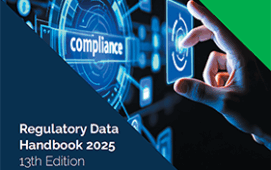It’s always fun to hear TowerGroup’s Tim Lind expound on any aspect of the securities operations business. Tim has an uncanny knack for making what’s mundane to many, well, fun. This month’s performance – for it was one – was courtesy of SunGard EPI, the unit of the financial software monolith that deals with transactions and reconciliations.
SunGard is in the midst of a roadshow – Brussels next – to show off its new-ish STeP platform, which integrates the company’s various applications in that area in a single framework built using Web Services technologies – you know, SOAP, XML, UDDI and that kind of stuff. Lind was on the bill – which also featured Microsoft – to lend some brevity to the proceedings and to make real sense of a complex and esoteric area of the business. Ostensibly, Lind’s presentation discussed how firms were achieving centralization in the operations area. SunGard EPI’s new STeP platform is clearly aimed at helping them along the way. But in both Lind’s and SunGard EPI’s presentations, we were struck by the core role played by reference data. Within STeP, for example, a so-called Data Tier is effectively the foundation for a series of additional tiers, each adding functionality or capabilities such as integration, applications like cash management, reconciliation and exception management, and finally access and control through an operational monitoring facility. The strategic role of reference data in creating a unifying platform for SunGard’s STP activities serves to underscore the extent that the industry has awakened to the fact that clean, normalized data is key to achieving the kind of integrated view of the business that will be required going forward. As SunGard’s able presenters pointed out, the drivers behind this process are many: industry consolidation, globalization, regulatory pressures and transaction complexity. The bottom line, it seems to us, though, is that in the new world of unrelenting scrutiny of costs, the operational efficiencies promised by such systems are to be ignored at an institution’s peril. Without them, improving margins will be nigh on impossible in the short to medium term. IBM appears to agree. It just announced a set of tools and applications designed to help institutions meet the rigorous requirements of the Basel II initiative. In launching this new Basel II capability, IBM cites estimates of European banks’ spending on the initiative of $4 billion. Reference data – and the platforms, messaging systems and software used to manage it – will surely account for a reasonable portion of that. So does Eagle Investment Systems. At a seminar co-hosted with Sun Microsystems in London on March 25, our own Angela Wilbraham will discuss how ongoing developments in the reference data marketplace may impact firms’ initiatives to centralize (www.eagleinvsys.com/passportevent). Two years ago, A-Team Consulting, publisher of Reference Data Review, estimated the size of the market for reference data services alone at $545.59 million in 2002, with projections of $687.28 million for 2005, in its Securities Administration Data – the Essential Piece of the STP Puzzle. (In some ways, the title of the report says it all. It’s good to see we’re on the right track.) Back then, we showed how FT Interactive Data dominated the marketplace in terms of revenue share. We have since released a sister report – Software Providers: Working with Reference Data – which shows FT Interactive Data’s strong position in the market in terms of interfaces to key third-party applications. But what’s even more striking from the latest report is the scope of the applications that rely on reference data services in order to function. From enterprisewide data management to portfolio management to risk management to trade order management. The drive toward integrating these internal functions – i.e. STP – is in turn driving demand in our marketplace. With Basel II and other industry events opening up budgets, 2004 will be an important year for anyone involved in the space.
Subscribe to our newsletter




